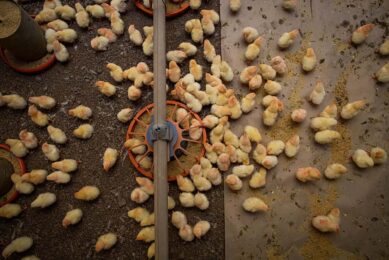The next generation of microbiological testing of poultry

Microbiological testing of food products is a common practice of food processors to ensure compliance with food safety criteria. Sampling on its own is of limited value, but when applied regularly at different stages of the food chain microbiology testing can be an integral part of a quality control program.
No feasible sampling plan can assure the absence of food-borne pathogens, but when done on a regular basis, changes in contamination of pathogens such as Salmonella on raw poultry can be identified so that corrective action can be taken.
There are many challenges associated with Salmonella testing of raw poultry. Salmonella prevalence rates on chicken carcasses can be increased or decreased depending on the sampling methods used, such as changing the portion of sample cultured after whole carcass rinsing or changing the sample weight of neck skin or meat sampling.
A major goal of food testing is to reduce the time of enrichment cultures. Enrichment times for cultures applied to a molecular assay can be reduced by using as much of the enrichment culture in the assay as possible. Traditional cultural methods for isolating food-borne bacterial pathogens from foods have many weaknesses, including an extended time (several days) to complete, the need for considerable personnel time, and are subject to technician error and variability. Molecular methods for pathogen detection in foods can have several advantages over cultural techniques, including reduced time to completion, reduced labour needs, improved precision of assay results, and less likelihood of operator variability and potential error. The dilemma of using new molecular pathogen detection procedures for foods is that although they are more rapid, easy to perform, can be highly automated, and be more cost effective than traditional cultural methods, not having an isolate for sub-typing could adversely affect food-borne disease surveillance and food attribution systems. However, for routine food-borne bacterial analyses, this new generation of molecular microbiological testing should greatly simplify protocols, reduce labour costs, reduce the likelihood of laboratory contamination and error, and enhance the precision of results, of today’s food microbiology laboratory.
(M.M. Becker, N. Cox, K. Livezey, M. Wisniewski and M.P. Doyle, Proceedings World’s Poultry Congress Salvador, Brazil, World’s Poultry Science Journal, 68, supplement 1)
Join 31,000+ subscribers
Subscribe to our newsletter to stay updated about all the need-to-know content in the poultry sector, three times a week. Beheer
Beheer








 WP Admin
WP Admin  Bewerk bericht
Bewerk bericht